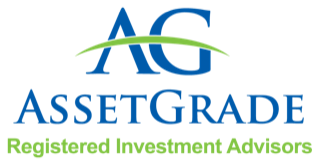
Big Changes in Bond Market = Changes in Asset Allocation
By: Patrick R. Cote CFA, CFP®
One of the most important decisions investors make is their asset allocation – the split between stocks, bonds, cash and the asset classes within each type (US large cap stocks, emerging market stocks, short-term bonds, high yield bonds, etc.). Research shows that trying to time the market hurts investors, which means you should avoid making rapid and drastic changes to stock allocations if your personal circumstances have not changed. Dialing up or down the allocation to stocks means trying to time the market.
However, the bond market works differently and is more mathematically driven. Bond prices are primarily driven by the yield curve, which refers to the interest rates for short-term, medium-term and long-term bonds. As interest rates go up, prices for existing bonds will go down – this means that anyone who was holding bonds might have lost money. For example, who wants to own that old bond paying 1.75% when you can get a nice shiny new bond paying 4%?
As we mentioned in earlier blogs, the Federal Reserve kept interest rates artificially low for the decade prior to the pandemic. Even as the economy recovered after the initial Covid shock in 2020, the Fed was slow to raise rates. With inflation now much higher in the US and around the world, the Fed finally raised the Fed funds rate from its target of 0 to 0.25% in March 2022, to a new target of 3.75% to 4.0% in November 2022. This increase of 3.75% in interest rates has caused a massive upheaval in the bond market. The overall bond market has decreased 16% in 2022, which is equivalent to losing 10 years’ worth of interest payments (since 10 year US Treasury bonds were paying 1.6% at the beginning of 2022). The longer the term of the bond, the worse they were hit, with 30 year bonds down 35% year-to-date in 2022!
It might seem that with such large declines, bonds would not be attractive to own. However, as bond yields have gone up, purchasing bonds now begins to look more attractive for investors.
At AssetGrade, we are fortunate to have a highly talented and experienced Board of Advisors that works with us in many key areas. At our Board of Advisors meeting in Boston a few weeks ago, we confirmed several changes to the asset allocation that we apply broadly to our clients’ portfolios. Most importantly, now that the Fed is no longer keeping interest rates low, we have moved our bond allocation back to “normalized” levels. Because long-term bonds were particularly at risk of decline once interest rates started to move up, we had previously excluded long-term bonds from our clients’ asset allocations up until this spring. We started to increase the allocation to them slowly this spring and have now set US long-term bond allocations back to normalized levels. The only bond allocations that we have not brought back to normalized levels are the non-US developed market bonds. The government 10 year bonds are only at 2.2% in Germany and 0.26% in Japan, so they are not yet attractive enough to include in our client portfolios.
While it has been disruptive to have such a large increase in interest rates this year, the good news is that it is healthier for the long-term investment environment to now have interest rates that are not artificially low. In particular, retirees will now be able to include bonds in their portfolios and receive reasonable returns. As always, we will continue to monitor the investment environment – don’t hesitate to contact us with any specific questions about your portfolio.

